Treehouse is hard to figure out. The vineyard is located eight miles from the Pacific Ocean and yet, 100 yards away, lies a stand of coastal cypress. Nobody can explain it. Why those trees thrive in that place, when every other tree is either a redwood or a fir, is a mystery. Or perhaps, an omen.
The vineyard sits at an elevation of 750 feet. Elevation is key. Too high and the vines get too stressed. Too low and they get too vigorous. Because it’s above the fog line, Treehouse receives more hours of sunshine (longer degree-days in wine-speak) than most anywhere else in the Valley. In spite of being above the fog, the site’s aspect lets it enjoy all of the fog’s cooling effects. It’s a phenomenon you just have to see for yourself.
It can be 85 degrees here in the daytime and, because of the fog, 50 degrees at night. This diurnal temperature variation gives the vines a chance to rest. Since they don’t need to precipitate all night long, the grapes can better hold their acidity. The key is that these warm temperatures last longer at Treehouse since it sits above the fog line and receives the sensitive early morning sunshine. This gives the vines a chance to wake up in the sunlight, rather than the fog. It’s one reason why Treehouse is so special.
IT’S EASY TO THINK THAT ALL THE GOOD LAND HAS ALREADY BEEN PLANTED, THAT THE DIE IS CAST. BUT THE FUTURE BELONGS TO THE LUCKY SOUL WHO CHANCES UPON A JUST-RIGHT MICROCLIMATE HOVERING ABOVE A JUST-SO SOIL.
Another is its iron-rich volcanic soils – the first thing you notice when you come upon the site. Like an ancient Pacific atoll churned by tectonic forces, the terracotta red soil retains the sun’s warmth and helps the vines mature evenly.
The fruit gets ripe with just the right chemistry. The wine it creates saturates the palate yet has natural elegance, finesse and intensity. What’s remarkable about this vineyard is that it delivers exceptional flavor, intensity and textures early in the ripening phase.
Treehouse is planted to five different clones – 23, Swan, Pommard, Calera and 37. While each of them have something different to add, they all have the unique stamp of Treehouse and they all serve the same end: giving us the tools we need to showcase the diversity and complexity of the site.
Clone 23 bears some explanation as it is not widely planted. This particular clone yields berries that are larger than what is typically considered the ideal. I chose to plant 35% of Treehouse to it because it lends the final blend intense red fruits - crunchy fruits like pomegranate, cranberry and ripe rhubarb. The perfect backbone to a layered wine.
Treehouse is really starting to come into its own, assuming the role it’s destined for on this special piece of land. The roots are well established now, so the vines can rely mostly on the native ground water. The plants themselves are strong, with just the right amount of vigor. When you walk the rows you can tell that the vines are comfortable and feel good. It’s a magical place and I’m thrilled to see the vines continue to establish themselves so well in their vibrant red volcanic soils.














